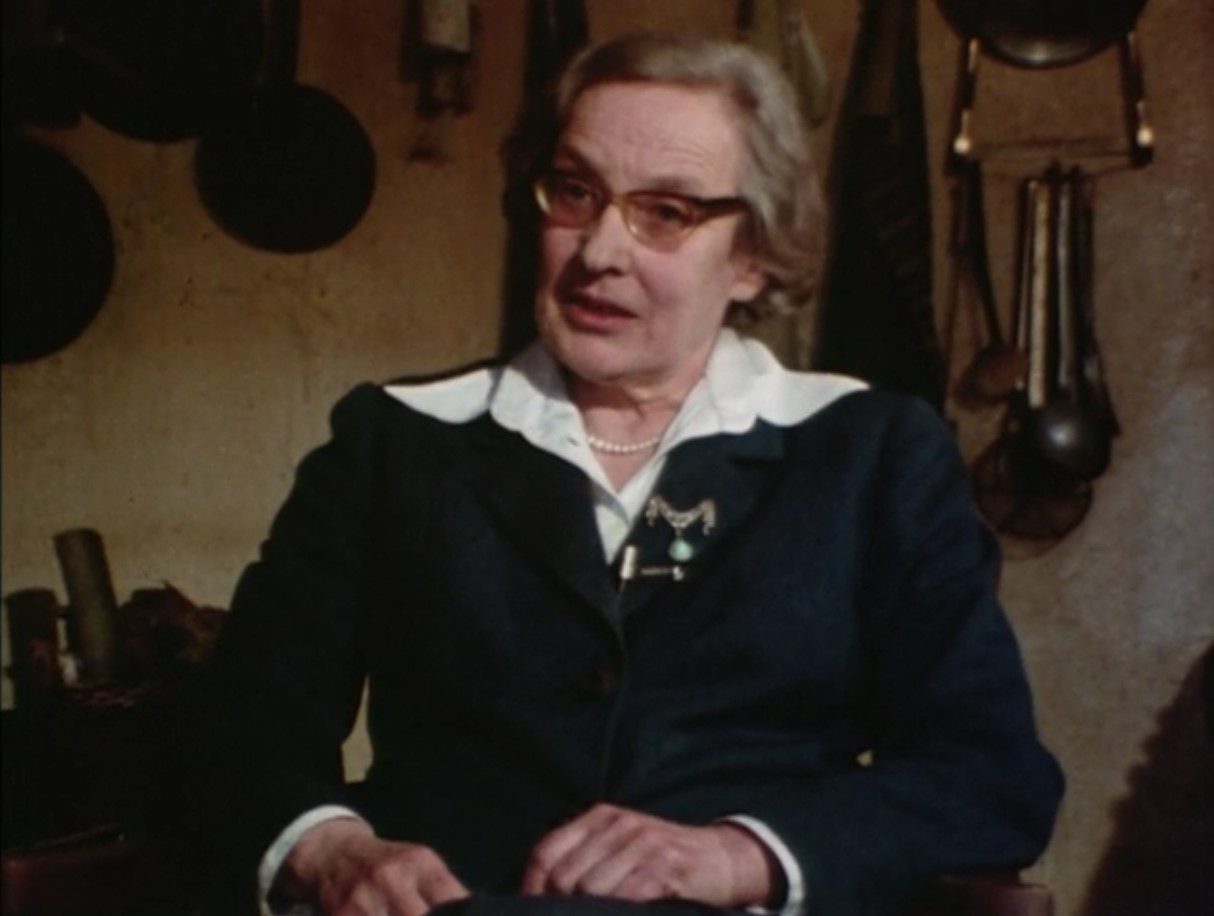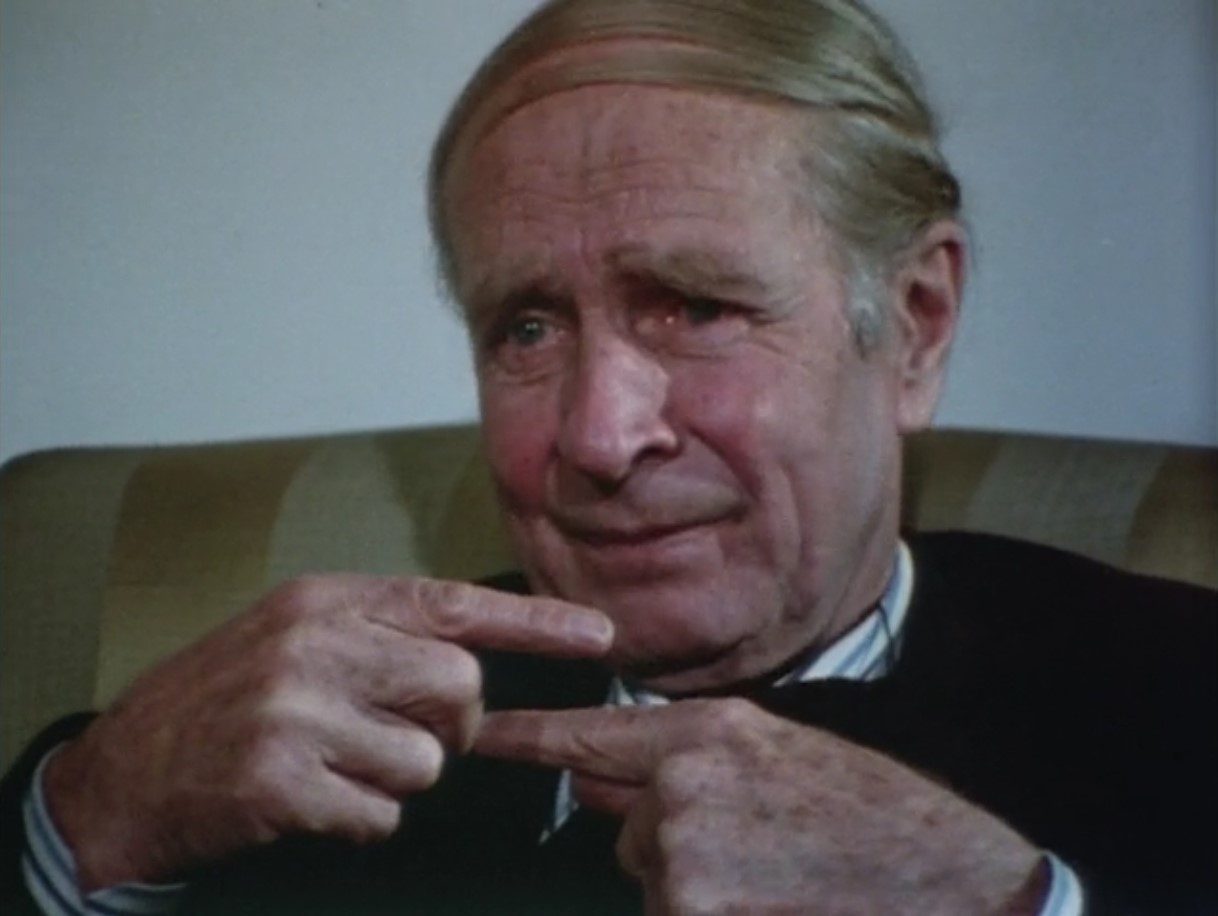Directed by Mark Whitney and released in 1986, Matter of Heart details the life and work of 20th century Swiss psychiatrist C. G. Jung. The film consists of interviews with several Jungian analysts, many of whom were trained by Jung himself. A few acquaintances, former analysands, and two of Jung’s relatives are also interviewed. Footage of Jung himself, as well as quotes written by Jung and his wife, Emma Jung, are sprinkled throughout the film. Suzanne Wagner, an American Jungian analyst, serves as the primary interviewer, but occasionally others fill the role.
After the opening credits, the film begins with footage of a dark, rippling lake and the voice of one of Jung’s longest collaborators, the Jungian scholar and analyst Marie-Louise von Franz. She tells the story of her first meeting with Jung, which took place when she was just 18 years old. She describes how she began to understand what Jung meant by psychic reality: for him, “What happens psychically is the real reality.” In other words, the subjective dimension of human experience is valid, real, and perhaps equal to—or maybe even more significant than—consensus reality. Throughout the film, von Franz provides superb elucidations of Jung’s ideas and, in a way, replicates the role she played throughout her life. For me, her interview segments make the entire film a worthwhile endeavor.

One of the fascinating things about this film is how each interviewee has a distinct experience of Jung and a unique understanding of his ideas, even if they were peers who trained with Jung in Zurich at the exact same time. These interpretations are, of course, reflective of each speaker. Some analysts emphasize psychological wholeness, while others highlight intrapsychic dynamics, religion and spirituality, psychological types, and the dark side of the psyche, which Jung termed “the shadow.” Regardless of their varied interests, it is clear that each of the speakers really wrestled with Jung and his ideas during their analytic training and in their personal analysis. As a result of their efforts, they speak articulately and with an impassioned sense of certainty. It makes for a compelling viewing experience.
Some interviewees talk about their relationship with Jung, like the author Mary Bancroft, who tells a funny story about her analysis with Jung. In an analytic session, she asked Jung, “Why is everybody so mean to me?” and Jung responded, “Why are you so mean to everybody?” This enraged Bancroft; she stormed out of Jung’s office and abruptly ended her analysis with him. For the next year, Bancroft sent Jung several letters berating him and calling him a charlatan, until one day she woke up and realized what she was doing. She laughed at her own meanness and realized Jung had made an accurate observation. According to Bancroft, Jung expected her to come back at just that moment—he informed his secretary to clear his schedule, because he knew that Bancroft would be calling that day to continue her analysis.
The end of this story epitomizes one of the primary ways this film portrays Jung. Many of the stories included serve to illustrate Jung’s exceptional intuition; this has a cumulative effect, and by the end of the film, he is implicitly positioned as a kind of prophet, especially when von Franz describes his “final” apocalyptic vision. He is certainly spiritualized in this film; we see ghostly footage of him in slow motion, and due to the high contrast of the black and white film, his clothing glows like a spirit. Yet he’s also depicted chopping wood while wearing a large sunhat, and is described as helping neighbors with farm work and creating original sculptures out of stone. The film attempts to portray him as a kind of “balanced” or “whole” individual, but I don’t know if this portrayal is ever quite convincing.

Early on in the film, a quote from Jung appears onscreen:
Biographies should show people in their undershirts. Goethe had this weaknesses and Calvin was often cruel. Considerations of this kind reveal the true greatness of a man. This way of looking at things is better than false hero worship!
This quote is followed by a few stories about Jung’s bluntness and stubbornness, and tales abound regarding his ongoing relationship with his “other wife,” Toni Wolff. However, the interviewees admit that everyone knew about his relationship with Toni, and the stories about bluntness or stubbornness don’t appear to be particularly shadowy. It’s interesting viewing this film now, in terms of the more recent criticisms of Jung’s life and work. For example, Emma’s family’s wealth is never mentioned in this film; she was from the second richest family in Switzerland, and Jung gained control of her wealth when they married. Jung’s comments about Semitic psychology and dealings with the Nazis are never mentioned in this film, nor are his writings about Africans and other indigenous peoples, which oscillate between being racist, idealizing, exoticizing, and infantilizing.[1] His five children are also glaringly absent from the film, so we are left to wonder about what Jung was like as a father. Further, many analysts emphasize, perhaps defensively, that Jung never took advantage of his female patients. One exception here is Heinrich Fierz, who describes Jung as being “charming” and even “seducing” to his female patients; he says that Jung offered “often a little bit too much” in the way of transference. (It is also worth noting that Sabina Spielrein, a patient who had an intimate relationship with Jung, is never mentioned in the film.)
For me, Matter of Heart is a mixed viewing experience. On the one hand, it is psychologically stimulating, and there are moments I simply never get tired of: Barbara Hannah’s endearing and almost unintelligible voice; the animated gestures of Sir Laurens van der Post; the close-ups of von Franz’s hands gripping her chair or clenching her fists as she fervently answers Wagner’s questions. On the other hand, the film has a slow, sleepy quality: I’ve tried screening this for friends, and a number of them have fallen asleep about 20 minutes in. There is also a segment where Jung describes a patient’s dream; I almost always skip this part, because his long explanation makes me so tired. The musical score, which consists of strings and a synthesizer, is also a mixed bag. It’s emotionally evocative, but also unnerving at times; the strings might even be out of tune. It feels slightly off kilter, like something is about to fall over and shatter. This has a varied effect on the viewing experience; sometimes it works, sometimes it doesn’t.

Wherever you stand on Jung and Jungian psychology, I do think Matter of Heart is an important historical document. For me, the analysts are really the stars of this film, rather than Jung himself. There is something uniquely potent about them. In general, they have strong, forceful personalities and they are thoughtful, compelling speakers. They become increasingly animated as they discuss relationships, dreams, war, psychological development, religion, alchemy, and the possibility of human-made planetary destruction. They never flinch from heavy topics, and their eyes are soul-piercing. Based on when the film was made, it is safe to assume that most of the people interviewed have since passed away. Fortunately, their intellectual acuity and emotional courage have been documented. Their ideas and interpretations may have differed, but the people in this film all speak passionately from the heart.
[1] For more on race and Jungian psychology, see the work of Fanny Brewster. See also C. G. Jung and the Sioux Traditions by Vine Deloria.


